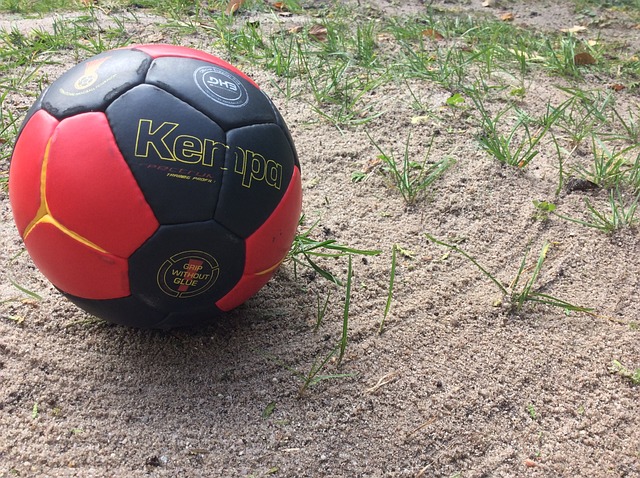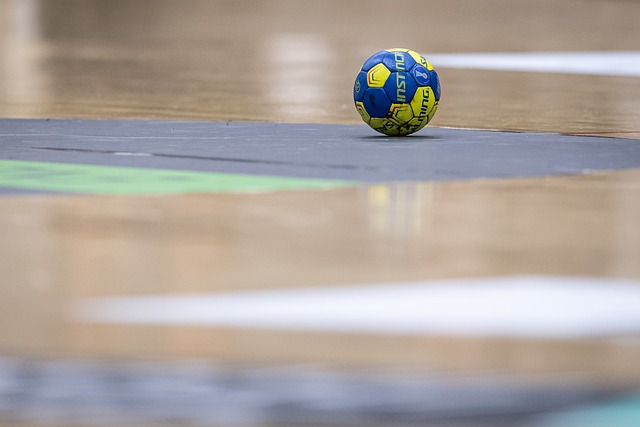In the fast-paced and dynamic sport of handball, the importance of the ball cannot be overstated. A well-designed handball can significantly impact the performance and experience of players, making innovation in ball technology a crucial aspect of the game’s evolution.
This article delves into the world of handball ball design, showcasing the latest advancements, materials, and features that are revolutionizing the sport. From improved grip patterns to smart sensors, we uncover the exciting developments shaping the future of handball balls.
How have recent advancements transformed handball ball technology?
Handball ball technology has come a long way, undergoing significant transformations in recent years. The incorporation of innovative materials, such as high-quality synthetic leather, has revolutionized ball design.
These materials offer enhanced grip and durability, ensuring players can maintain optimal control during intense matches. Additionally, the introduction of smart sensors embedded within handballs has paved the way for data-driven insights, enabling players and coaches to analyze performance metrics and refine strategies.
How do improved grip patterns enhance player performance?
Grip patterns play a pivotal role in handball ball design. Advanced grip patterns are strategically engineered to maximize player control and handling.
These patterns provide enhanced traction, allowing players to maintain a secure grip on the ball during rapid movements, quick passes, and powerful shots. Minimizing slippage and ensuring a firm hold, these grip patterns enable players to unleash their skills with confidence, making precise and accurate plays.
What role does aerodynamics play in the evolution of handball balls?

Aerodynamics is a critical factor in handball ball design. The shape and surface texture of the ball impacts its flight characteristics, accuracy, and overall performance. To optimize aerodynamics, modern handballs feature a streamlined shape and textured panels.
These design elements reduce air resistance, enabling the ball to travel through the air with increased stability and predictability. Improved aerodynamics empower players to make precise throws, passes, and shots, leading to a more dynamic and engaging gameplay experience.
Are smart sensors revolutionizing the way we interact with handballs?
Smart sensors are transforming the way players and coaches engage with handballs. Embedded within the ball, these sensors capture valuable data points such as speed, spin, and trajectory. This data provides players with objective insights into their performance, allowing them to identify strengths, weaknesses, and areas for improvement.
Coaches can leverage this information to analyze team dynamics, devise strategies, and fine-tune training regimens. Smart sensors have become an invaluable tool in enhancing player development and elevating the level of play in handball.
What are the key elements of a state-of-the-art handball ball?
A state-of-the-art handball ball comprises various essential elements that contribute to its exceptional performance. The outer covering, typically made of high-quality synthetic leather, ensures an ideal balance of grip and durability. It allows players to maintain a firm hold on the ball, even in high-pressure situations.
The bladder, either made of latex or butyl, ensures excellent air retention, resulting in consistent bounce and optimal playing conditions. Moreover, strategically designed grip patterns on the surface of the ball significantly enhance ball control and handling, allowing players to execute precise throws and catch.
| Element | Description | Benefits |
|---|---|---|
| Outer Covering | High-quality synthetic leather | Enhanced grip and durability |
| Bladder | Latex or butyl bladder | Excellent air retention for consistent bounce |
| Grip Patterns | Strategically designed patterns | Improved ball control and handling |
| Aerodynamic Design | Streamlined shape with textured panels | Reduced air resistance for accurate throws |
| Weight | Regulation weight between 425-475 grams | Optimal balance between control and power |
How do handball ball innovations contribute to injury prevention?
Handball ball innovations are not limited to performance enhancements alone; they also play a crucial role in injury prevention. Improved ball design focuses on mitigating the risk of hand and wrist injuries, which are common in the sport.
The use of advanced materials with shock-absorbing properties reduces the impact on players’ hands during intense gameplay. Additionally, the introduction of features like reinforced seams and enhanced padding minimizes the occurrence of ball-related injuries, ensuring the safety and well-being of players.
What impact does ball weight have on player agility and speed?
Ball weight is a crucial factor that directly affects player agility and speed. A regulation handball typically weighs between 425-475 grams. This weight range is carefully chosen to strike a balance between control and power.
A lighter ball allows for faster movements, enabling players to swiftly maneuver through the court and execute agile plays. Conversely, a slightly heavier ball provides greater momentum and power behind shots. Finding the ideal ball weight is essential for players to optimize their performance based on their playing style and position on the court.
Which materials are leading the way in innovative ball designs?
Innovative ball designs in handball are driven by the utilization of advanced materials that enhance performance, durability, and player experience. Manufacturers are constantly exploring new materials to push the boundaries of ball technology.
Here are some materials that are leading the way in innovative ball designs:
-
High-quality synthetic leather: This material offers excellent grip and durability, allowing players to maintain optimal control during intense gameplay.
-
Advanced composites: These materials provide a unique blend of durability, elasticity, and responsiveness, delivering a superior playing experience.
-
Eco-friendly materials: Manufacturers are incorporating sustainable materials such as recycled synthetic fibers and natural rubber to reduce the environmental impact of ball production.
-
Shock-absorbing materials: These materials help mitigate the risk of hand and wrist injuries, ensuring the safety and well-being of players.
-
Reinforced seams: By using robust stitching techniques and materials, manufacturers enhance the durability and longevity of handballs.
-
Latex or butyl bladders: These bladder materials ensure excellent air retention, resulting in consistent bounce and optimal playing conditions.
Can a ball’s size affect shooting accuracy and goalkeeping performance?
The size of a handball can significantly impact shooting accuracy and goalkeeping performance. Regulation handballs have a circumference of approximately 58-60 centimeters. A smaller-sized ball offers better maneuverability and control, facilitating accurate shots and quick passes.
On the other hand, a larger-sized ball provides goalkeepers with a greater surface area to defend, enhancing their chances of blocking shots. The choice of ball size depends on individual preferences, playing positions, and tactical strategies employed by teams.
How do manufacturers ensure the durability of modern handballs?

Durability is a key consideration for handball ball manufacturers. To ensure the longevity of modern handballs, manufacturers employ advanced manufacturing techniques and materials.
High-quality synthetic leather and advanced composites offer exceptional durability, allowing the balls to withstand the rigors of intense gameplay and frequent use. Rigorous testing and quality control measures are implemented to meet stringent standards and deliver reliable and long-lasting handballs to players.
Are eco-friendly materials being incorporated into ball designs?
In response to growing environmental concerns, handball ball manufacturers are increasingly incorporating eco-friendly materials into their designs. Sustainable materials, such as recycled synthetic fibers and natural rubber, are being utilized to reduce the ecological footprint of ball production.
Adopting these materials demonstrates their commitment to environmental sustainability while maintaining the performance and quality standards that players expect.
What factors are considered when designing balls for different playing conditions?
Handball is played in various settings, including indoor and outdoor environments, each with unique challenges and playing conditions. When designing balls for different playing conditions, manufacturers consider factors such as ball grip, bounce, and durability.
Indoor balls, for instance, require excellent grip to accommodate the smooth surfaces of indoor courts. Outdoor balls, on the other hand, are designed to withstand external elements and maintain performance on rougher surfaces. Tailoring ball designs to specific playing conditions ensures optimal gameplay experiences for handball enthusiasts.
Are there specialized balls for indoor and outdoor handball?
Yes, there are specialized balls designed specifically for indoor and outdoor handballs. Indoor handballs are crafted to excel on smooth surfaces typically found in sports halls. These balls prioritize exceptional grip and control to facilitate rapid movements and precise plays.
Outdoor handballs, on the other hand, are engineered to withstand rougher surfaces, varying weather conditions, and extended exposure to outdoor elements. The materials and construction of outdoor balls are optimized for durability and consistent performance in outdoor environments.
How do manufacturers balance performance and affordability in ball design?
Manufacturers strive to strike a balance between performance and affordability when designing handballs. Advanced technologies and materials used in high-performance balls may increase production costs.
However, manufacturers leverage economies of scale, efficient production processes, and material optimization techniques to maintain reasonable price points. Carefully selecting materials, streamlining manufacturing processes, and ensuring consistent quality can offer handballs that meet the performance demands of players while remaining accessible to a wider audience.
What does the future hold for handball ball technology?

The future of handball ball technology is incredibly promising. As the sport continues to gain popularity worldwide, there will be ongoing research and development to further enhance ball performance, durability, and player experience.
Innovations such as nanotechnology, advanced sensor integration, and sustainable materials will likely shape the future of handball balls. With continuous advancements, players can look forward to even greater control, accuracy, and enjoyment on the court.
To Sum Up
Handball ball technology has witnessed remarkable advancements in recent years, revolutionizing the sport. From improved grip patterns to smart sensors and eco-friendly materials, manufacturers are constantly pushing the boundaries of innovation.
These developments contribute to enhanced performance, injury prevention, and a more engaging gameplay experience. As handball continues to evolve, players can anticipate exciting future advancements that will further elevate the sport. The cutting-edge world of handball ball design is set to redefine the game for generations to come.